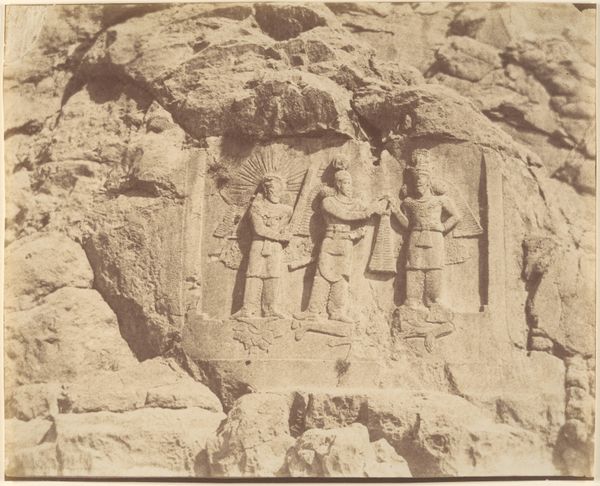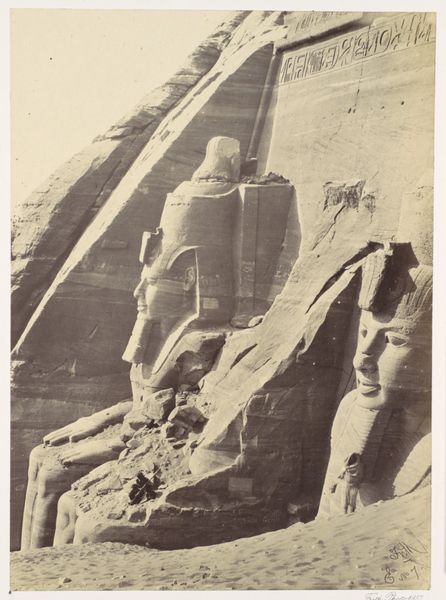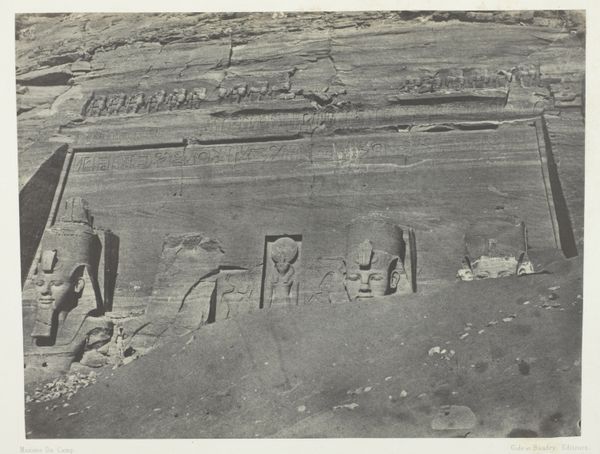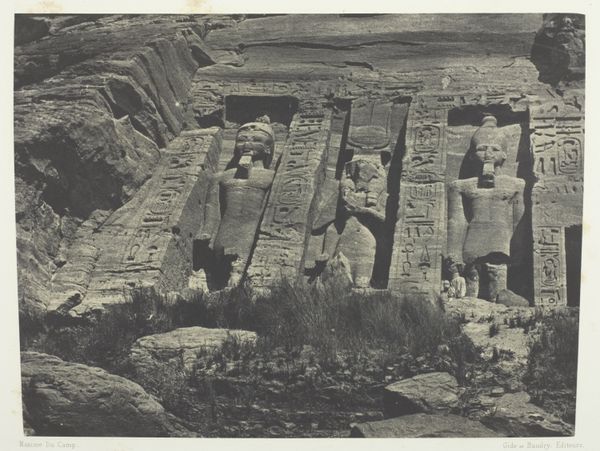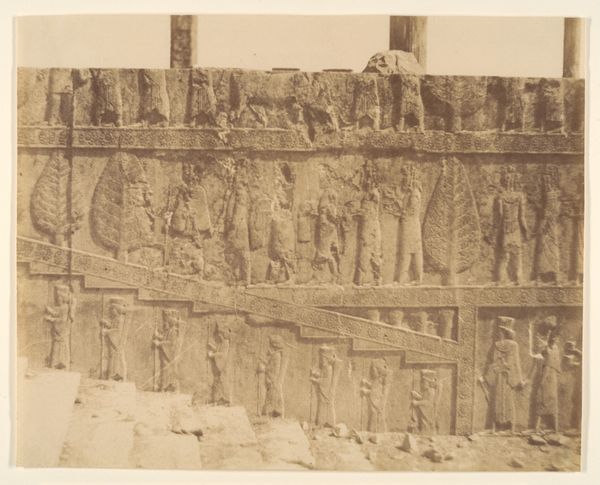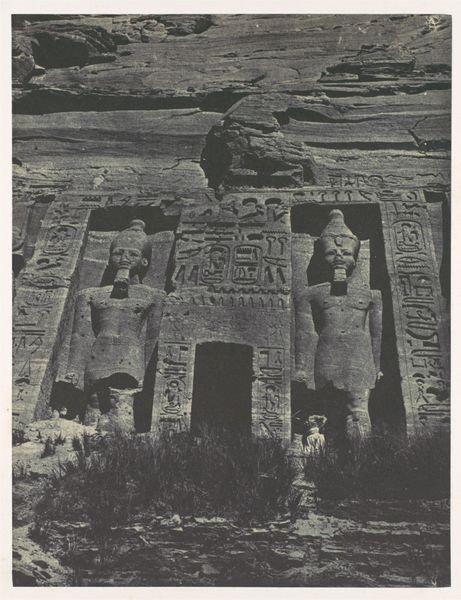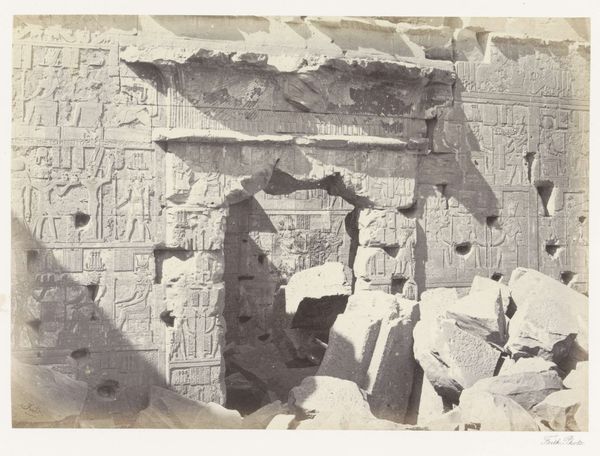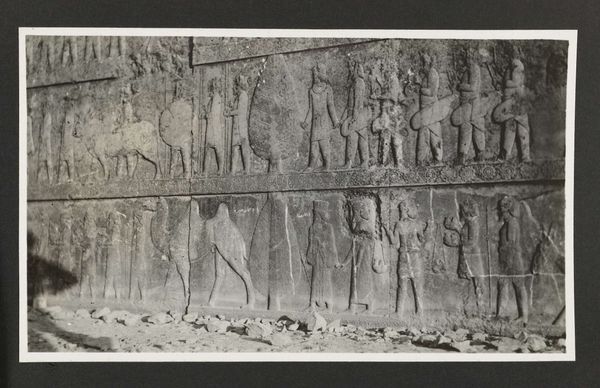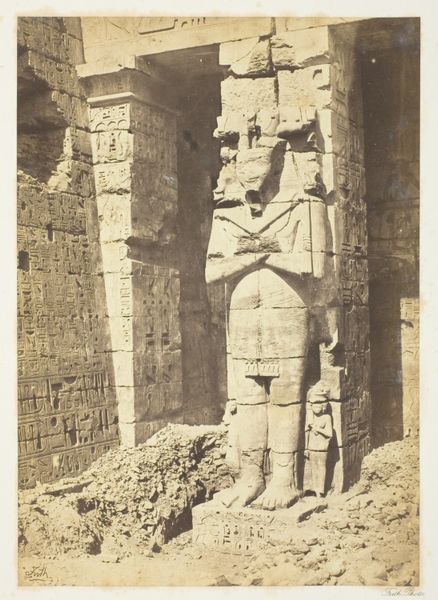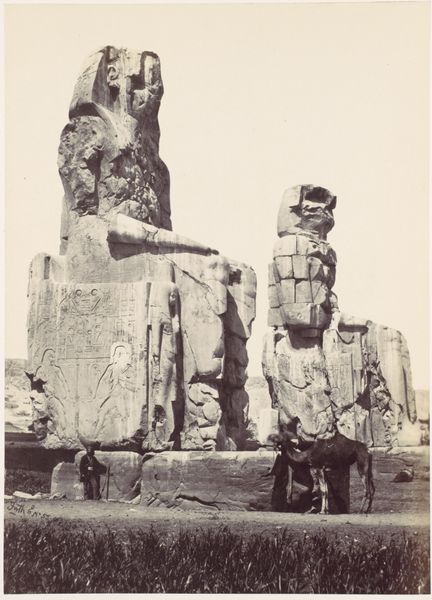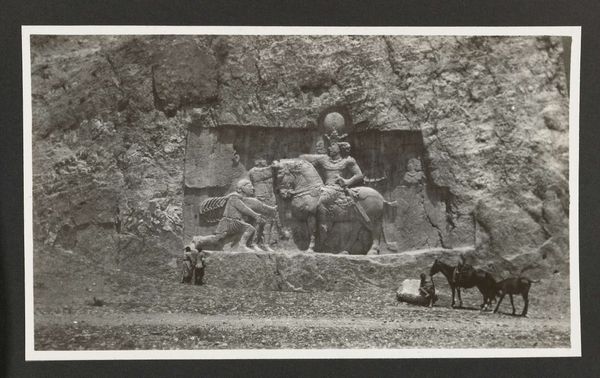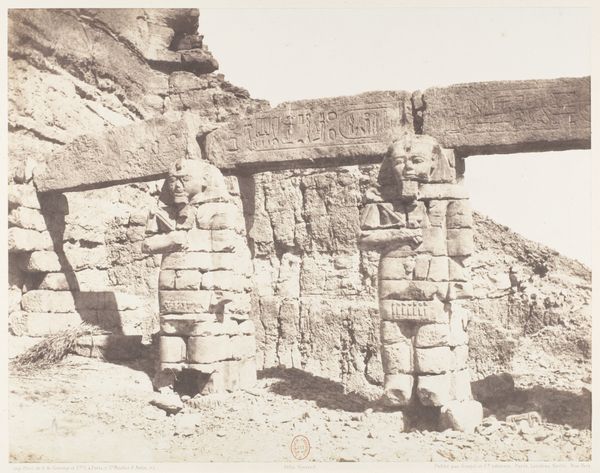
Bas-reliëf bij de Boog van de Tuin (Tahkt-i-Bustan), Kirmanshah, Perzië Possibly 1925 - 1928
0:00
0:00
carving, relief, sculpture
#
carving
#
carving
#
sculpture
#
relief
#
ancient-mediterranean
#
sculpture
#
carved
#
islamic-art
Dimensions: height 142 mm, width 85 mm, height 124 mm, width 184 mm
Copyright: Rijks Museum: Open Domain
Editor: Here we see a photograph of a bas-relief from Takht-i-Bustan in Iran, dating probably from between 1925 and 1928, credited to A.G.A. van Eelde. It's quite striking—the figures seem so authoritative and permanent, carved directly into the rock face. What do you make of this piece? Curator: This relief speaks volumes about power dynamics, not only in the Sasanian Empire where it originated but also in its modern photographic context. Think about it: it depicts a king receiving submission, likely legitimizing his rule through divine sanction. This image echoes throughout history, from colonial photographs reinforcing Western dominance to contemporary images circulating online. What historical narratives are being reinforced and what ones are being silenced here? Editor: That's interesting, I hadn't considered it in terms of visual rhetoric beyond the original context. It really makes you question what the photographer was aiming to capture too, doesn't it? Curator: Precisely. Who gets to tell the story and how is it being framed? The choice of perspective, the way light and shadow fall, it all contributes to a narrative. Consider how this image might have been used to reinforce colonial narratives or to construct an idea of Iranian identity during the early 20th century. Editor: So, understanding this work is not just about understanding ancient Persian culture, but also about critiquing the power structures embedded in its modern representations. Curator: Exactly! Art is never created or viewed in a vacuum. Its significance is always negotiated through shifting social and political landscapes. How does seeing it this way change your understanding of the image? Editor: I think it definitely forces me to be more aware of the layered meanings within it. It is no longer a simple photograph of an ancient relief, but a complex visual document that speaks across different eras and contexts about how we see each other, how power is maintained, and which stories we choose to value.
Comments
No comments
Be the first to comment and join the conversation on the ultimate creative platform.
